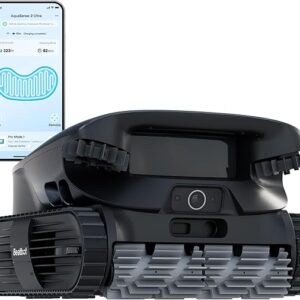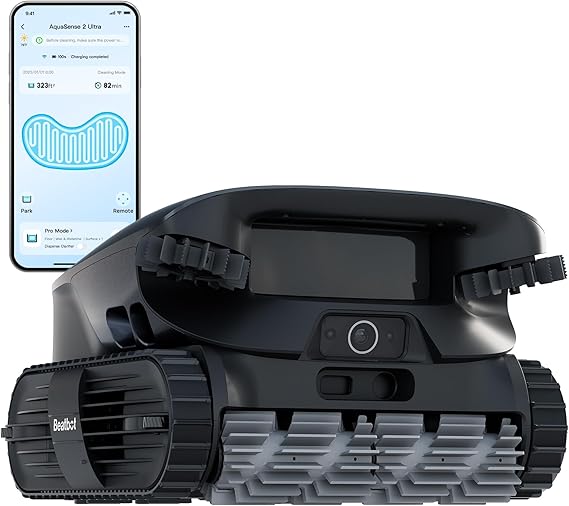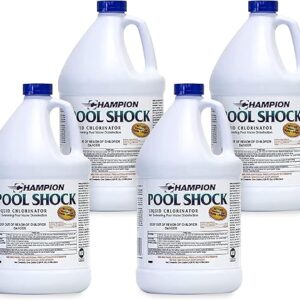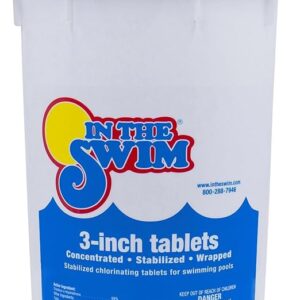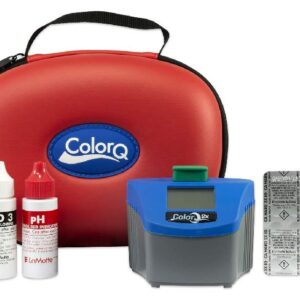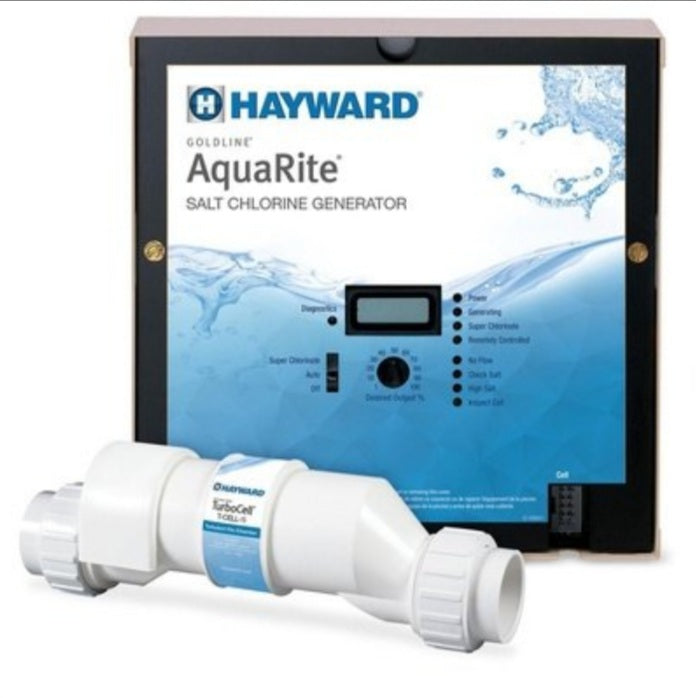How to Get Rid of Ammonia in a Swimming Pool: Slam Pool
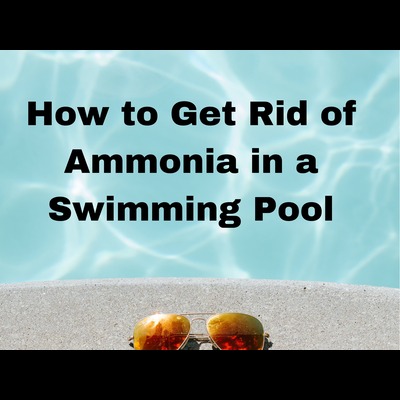
What Causes Ammonia in a Swimming Pool?
Ammonia is caused by bacteria, which form in a swimming pool that is not well sanitized. It is common in pools that close during winter and open in summer, but proper pool winterization or closing measures were not taken.
Ammonia is one of the causes of severely cloudy swimming pool water, which is challenging to clear and needs a lot of chlorine to kill ammonia and clear cloudy water.
To avoid ammonia in your pool, always ensure you shock your swimming pool so that the free chlorine level (FCL) is within the recommended range for a standard swimming pool, which is 2-3 ppm for non-saltwater pools and between 3-4 ppm for saltwater pools depending on your cyanuric acid level.
Secondly, when closing your pool during winter, make sure you perform all the necessary steps for closing a swimming pool, including blowing the lines, balancing your water, and covering your pool using solid winter pool cover that won’t allow dirt and sunlight to deplete free chlorine, leaving your water vulnerable to bacteria causing algae and ammonia.
Signs that you have Ammonia in your Pool
- High Chlorine Demand: Your pool will be in high demand for chlorine, and you will use a lot of it but with little to no change in FC levels and cloudiness.
- High Chloramine Levels: Your pool water will have a lot of chloramine or combined chlorine(CC), which will turn pool water cloudy and smell more of chlorine.
- Low Cyanuric Acid Levels: Ammonia feeds on Cyanuric acid(Cya), leaving your water with very low Cya or none in a short time.
- Low Free Chlorine Level: Free chlorine level will be deficient, mostly 0 ppm, and will only rise easily once you get rid of ammonia.
Requirements to Clear Ammonia in a Swimming Pool
1). Liquid Chlorine ( Sodium Hypochlorite): To clear ammonia in your pool, you will need a lot of liquid chlorine, probably 2 gallons of 12.5% or 10% chlorine (sodium hypochlorite). This is because you will have to reach maximum FC shock levels and maintain that shock level by adding more chlorine when the FC level drops below the minimum shock level.
Liquid chlorine is recommended because it will not affect pH, Calcium, and Cyanuric acid or stabilizer levels in your water like granular (Calcium Hypochlorite), diclor, and tablet chlorine.
2). Reliable Pool Chemical Test Kit: Not all test strips can measure high FC levels above 5 ppm. Since you will be reaching high FC levels between 12 to 16 ppm and sometimes above that, you will need a pool chemical test kit that can measure high FC levels.
3). Cyanuric Acid: Since your Cya levels will be reading low, sometimes 0 ppm, you must add Cyanuric acid to the recommended levels once you kill all the ammonia in your swimming pool. Also, having at least minimum cyanuric acid levels in your water would be best to avoid high chlorine consumption by the Suns’ UV light.
How to Eliminate Ammonia in a Swimming Pool: Pool Slam Method
The harder you hit ammonia by adding sufficient chlorine, the faster you will get rid of it. To get rid of ammonia, you have to SLAM your pool, which means reaching maximum shock levels and maintaining that shock level by adding more chlorine every 15-20 minutes if FC drops below the minimum shock level.
This means you must add chlorine several times a day to clear ammonia. Eliminating ammonia needs patience since it cannot be achieved in a day.
Saltwater pools are not vulnerable to ammonia attack. This is because chlorine is generated and added automatically into your water daily, leaving no chance of bacteria causing ammonia.
However, if your saltwater pool is affected by ammonia, shut down your saltwater chlorine generator (SWCG) and follow these steps like a non-saltwater pool. Here are the steps to perform to eliminate ammonia in your pool:
Step1: Measure and Adjust Cyanuric Acid Level
Take an accurate reading of your water’s cyanuric acid (Cya) level. Remember, the higher the Cya level in your pool, the more chlorine you will need to clear ammonia; the lower the Cya level, the more chlorine will be consumed by the sunlight.
The recommended Cya level for a non-saltwater pool is 30-40 ppm and 70-80 ppm for a saltwater pool. If your Cya levels are higher or lower than the recommended levels, it is advisable to adjust the levels to avoid using a lot of chlorine before ammonia clears.
For a saltwater pool, you will certainly need a lot of chlorine to clear ammonia since Cya levels are always very high. As such, we recommend shutting down your chlorine generator and lowering your Cya levels to non-saltwater levels by draining and re-filling a portion of your pool water.
Note: The maximum shock level to maintain for a 30 ppm Cya pool is 12 ppm FC; for a 40 ppm Cya pool, the maximum shock level is 16 ppm FC. The minimum shock level to hit before adding more chlorine is below 6 ppm and 8 ppm, respectively.
This means the minimum shock level is half the maximum shock level. If you have enough budget for liquid chlorine, you can do Cya levels of up to 60 ppm for a non-saltwater pool and 90 ppm for saltwater pools.
View the Chlorine/Cya Relationship to learn the correct shock levels for your pool, depending on your cya level. You can also view the pool slam chart below.
Pool Slam Chart
| Cyanuric Acid Level | Maximum FC Shock Level | Minimum FC Shock Level |
| 20 | 10 | 5 |
| 30 | 12 | 6 |
| 40 | 16 | 8 |
| 50 | 20 | 10 |
| 60 | 24 | 12 |
| 70 | 28 | 14 |
| 80 | 31 | 16 |
| 90 | 35 | 18 |
| 100 | 39 | 20 |
Step 2: Add Liquid Chlorine (Sodium Hypochlorite)
Using liquid chlorine of 12.5% chlorine, add enough initial dose of chlorine to raise your FC level to 12 ppm for 30 ppm Cya and 16 ppm for 40 ppm Cya pool.
Note: 10 oz. of 12.5% liquid chlorine will raise FC by 1 ppm in a 10,000-gallon pool. So, assuming you have a 0 ppm FC level, you must add about 120 oz. and 160 oz. of liquid chlorine to raise your FC to 12 ppm and 16 ppm in a 10,000-gallon pool, respectively.
Step 3: Measure and Adjust the Free Chlorine Level
Test your FC level in 15-20 minutes. If FCL falls below the minimum shock levels, which are 6 ppm and 8 ppm for 30 ppm and 40 ppm cya pool, respectively, add more chlorine to raise it back to the recommended maximum shock levels: 12 ppm or 16 ppm, depending on your Cya level.
Repeat steps 2 and 3 every day for a couple of days until your FC level becomes stable at the minimum shock level for at least 20 minutes to be sure you have killed all the ammonia. Here is the secret: The harder you hit ammonia in the initial doses, the less chlorine you need as you continue the SLAM process.
This will also increase the time frame of adding chlorine every 20 minutes, reducing the number of times you add chlorine in a day. If these steps are followed correctly, you may achieve results in a couple of days or so.
Step 4: Balance All Pool Chemicals
After getting stable FC levels at the minimum shock level for 20 minutes, leave your FC level to come down to 2-3 ppm for non-saltwater pools and 3-4 ppm for saltwater pools, depending on your recommended Cya levels.
Balance your water chemistry, starting with Cyanuric acid, to avoid losing more free chlorine. If you have a chlorine generator, raise Cya to the recommended levels between 70-80 ppm, balance all the chemicals, and power it to resume chlorine production. You may read about saltwater pool maintenance.

